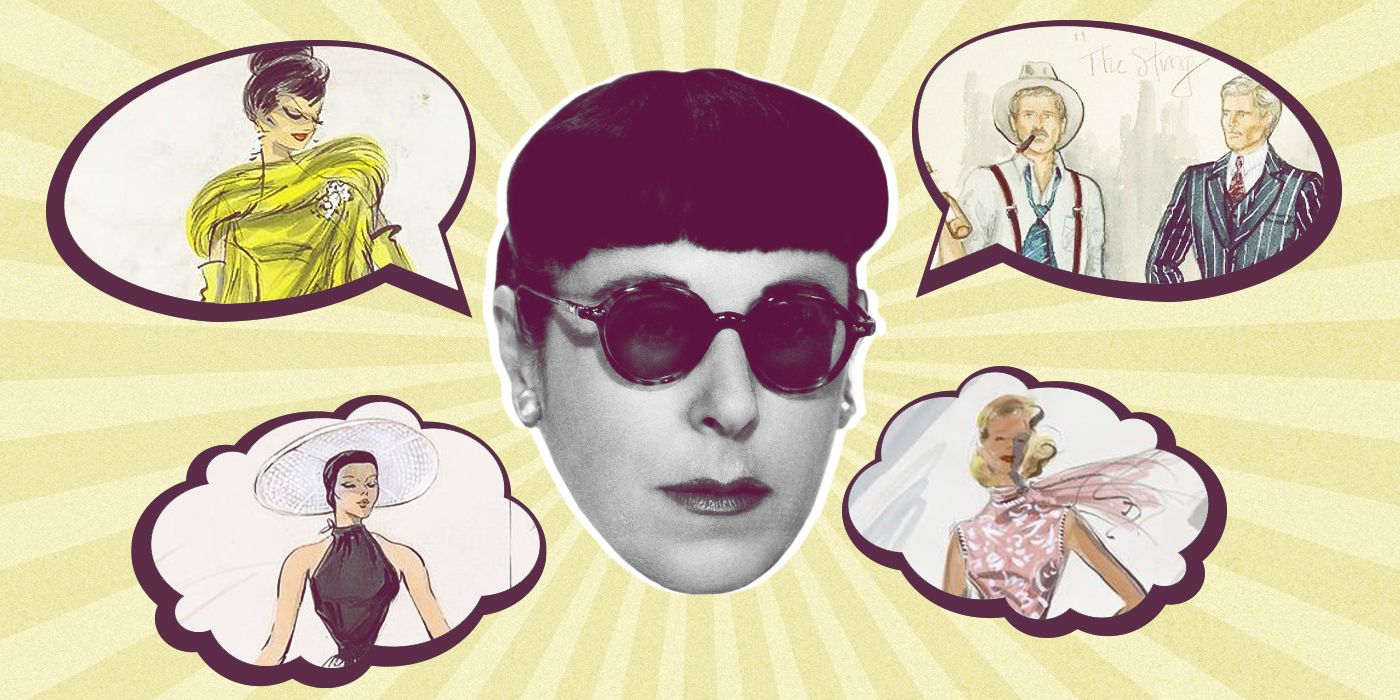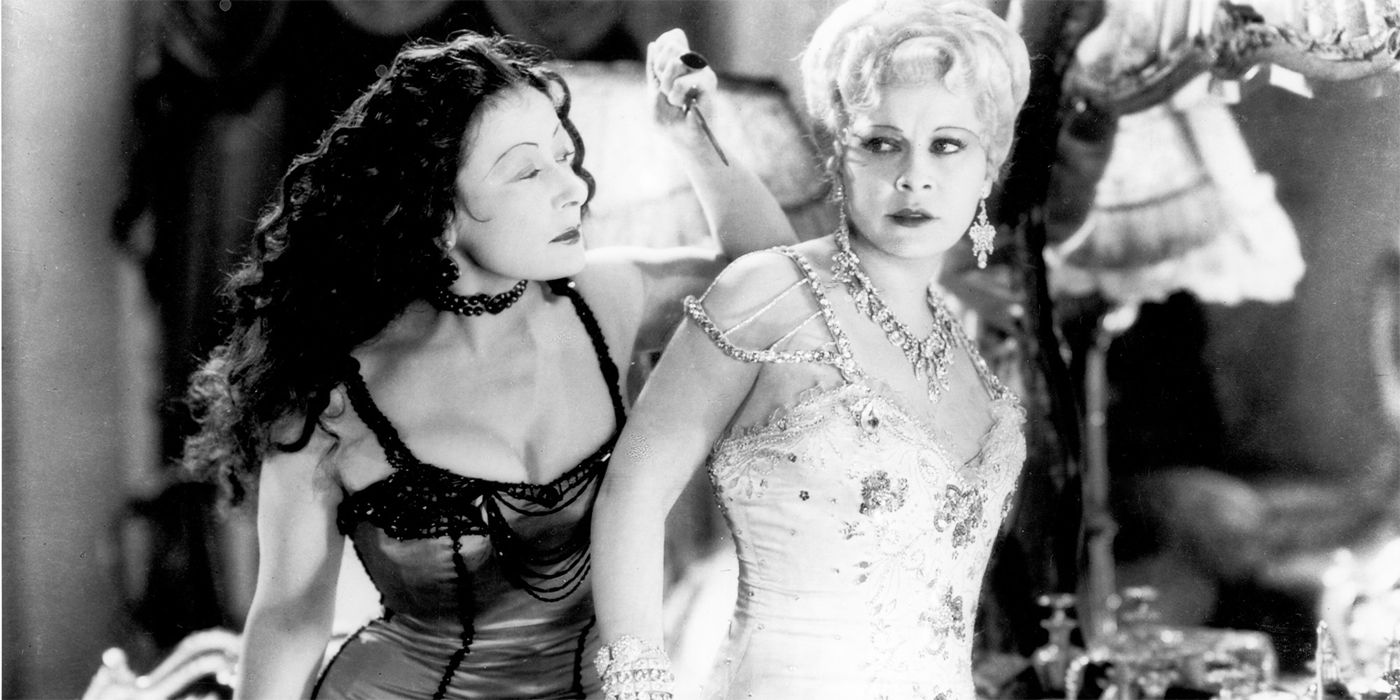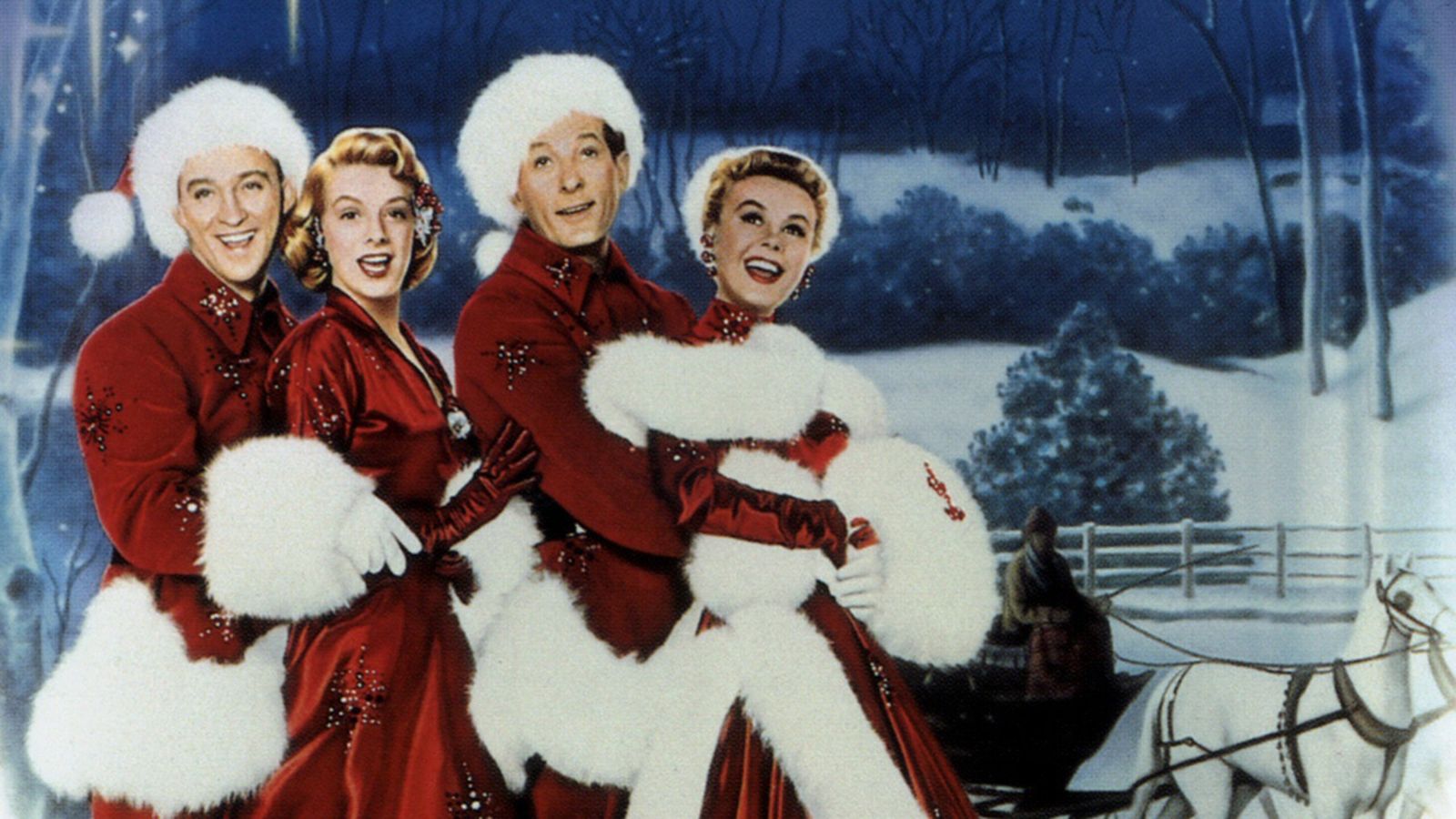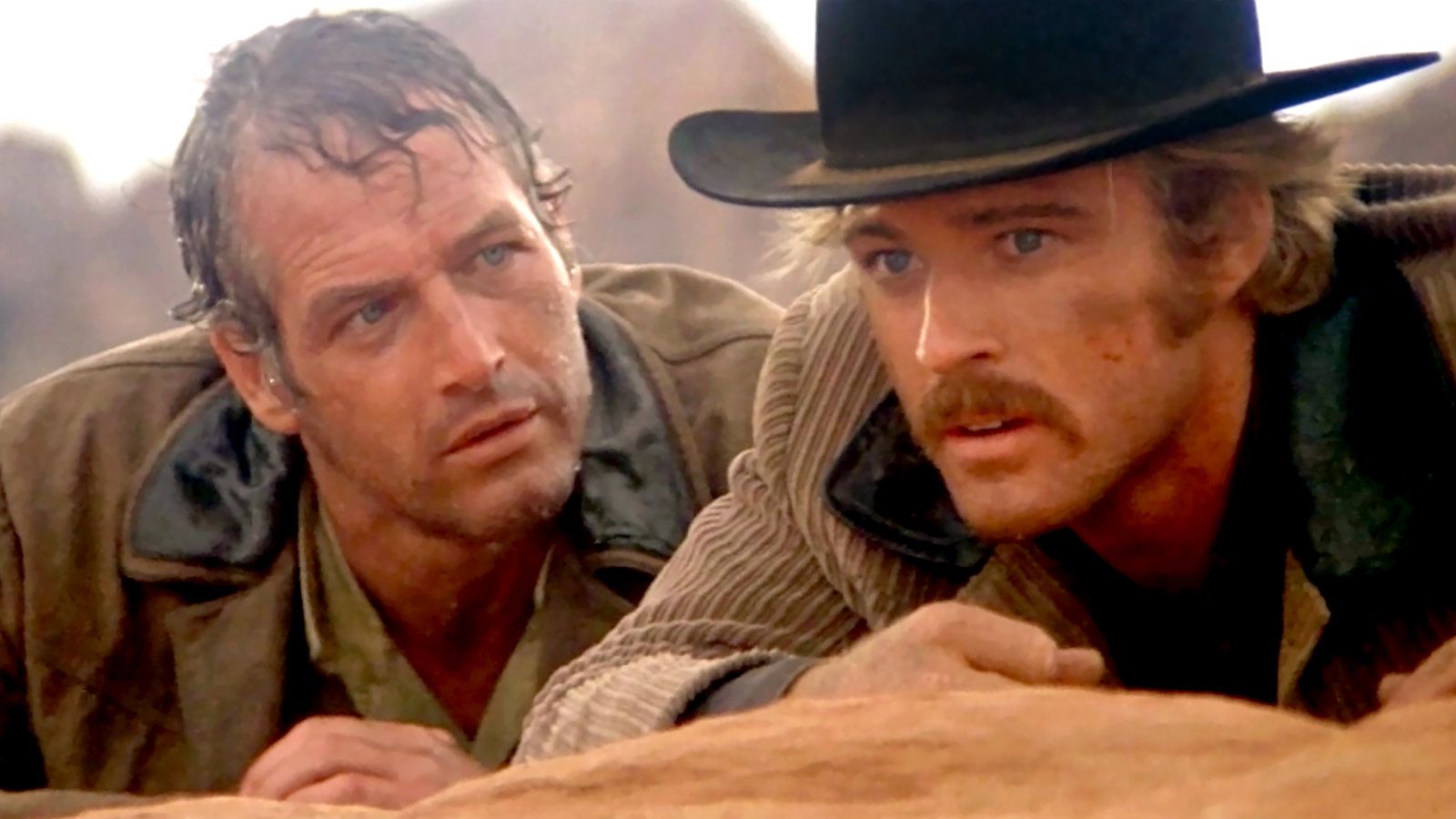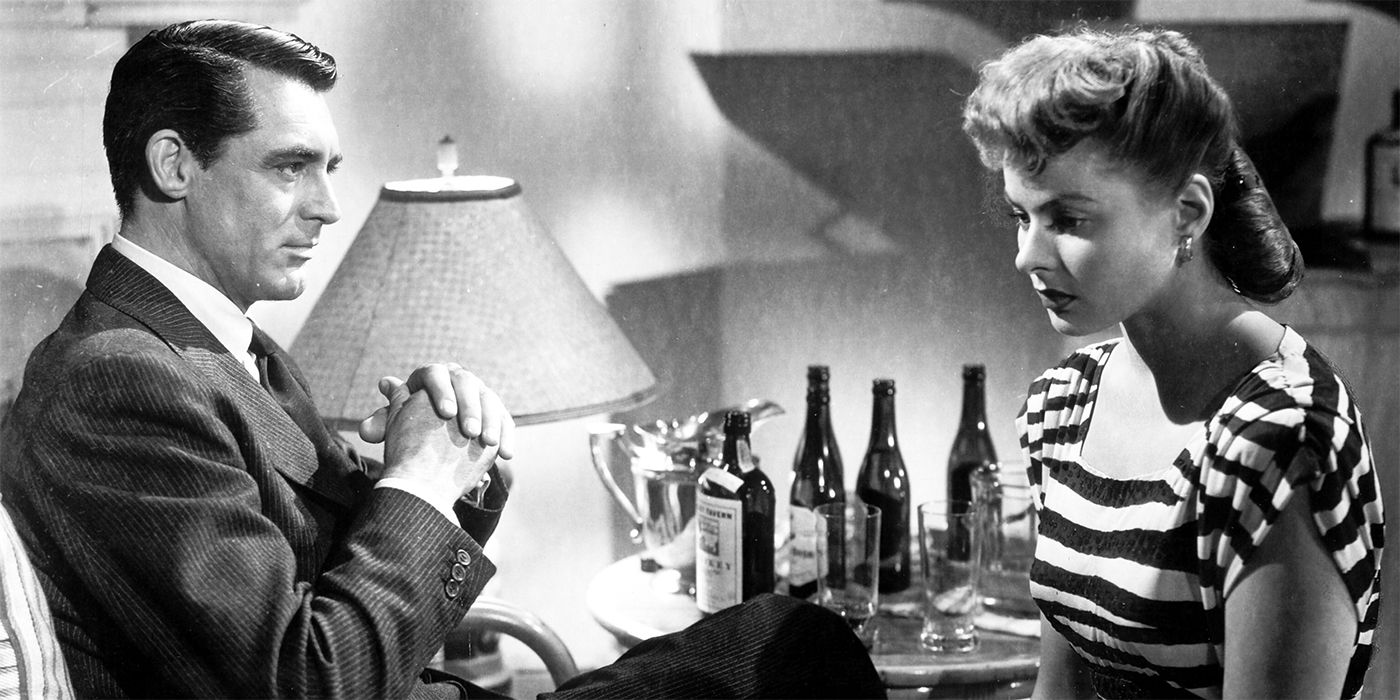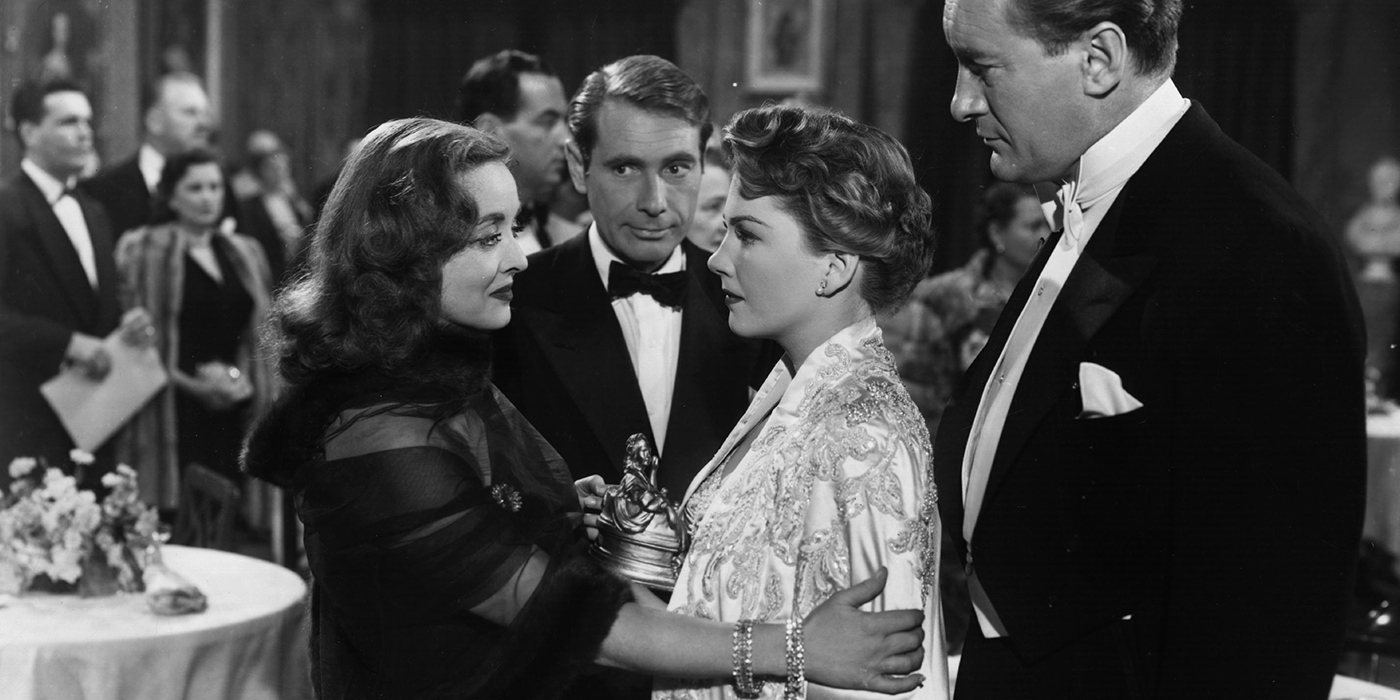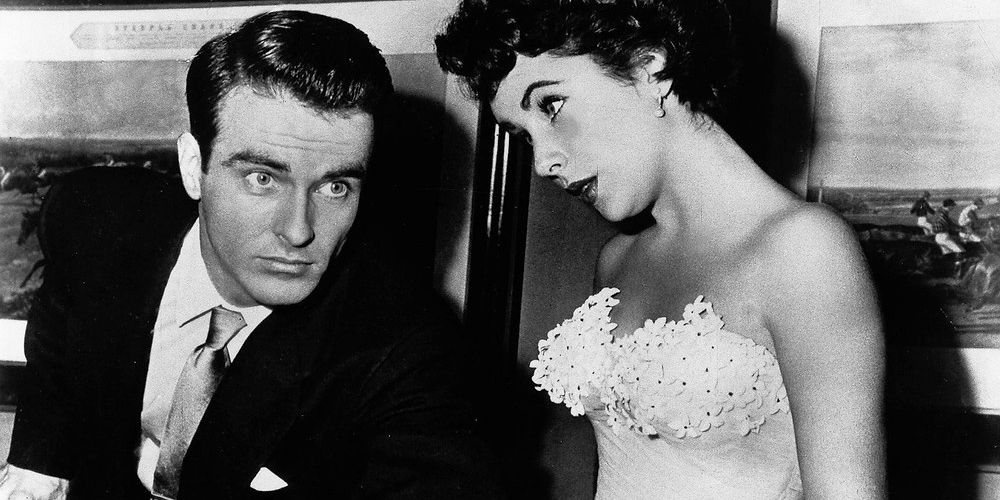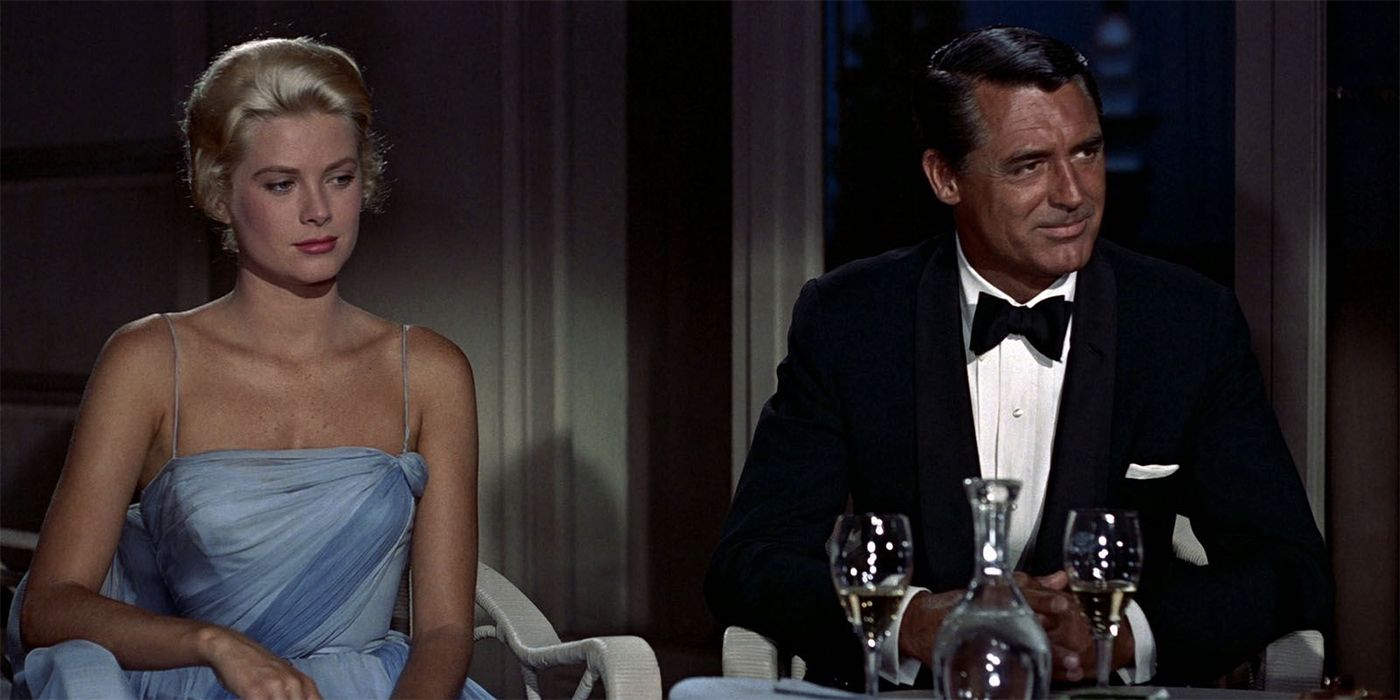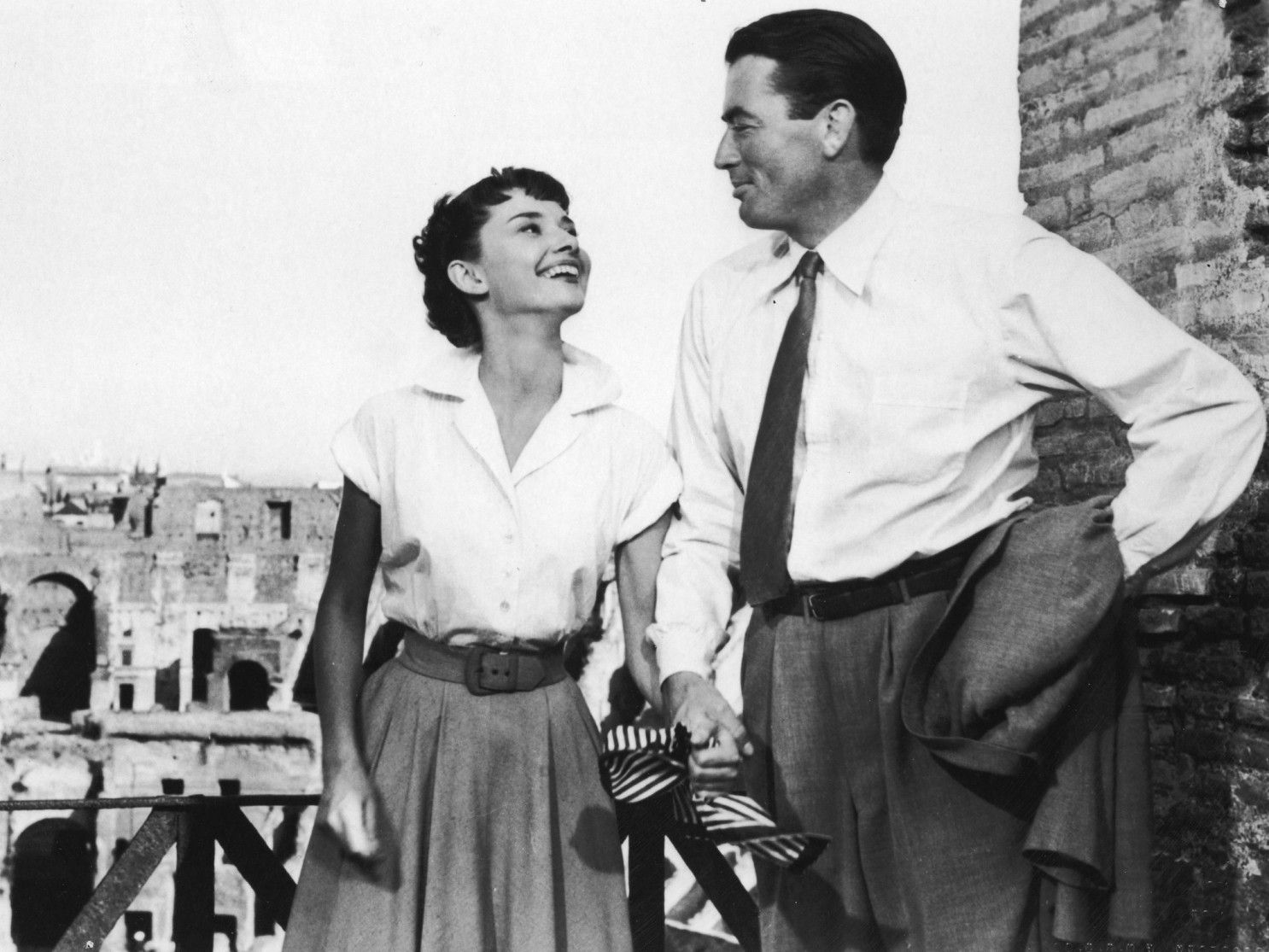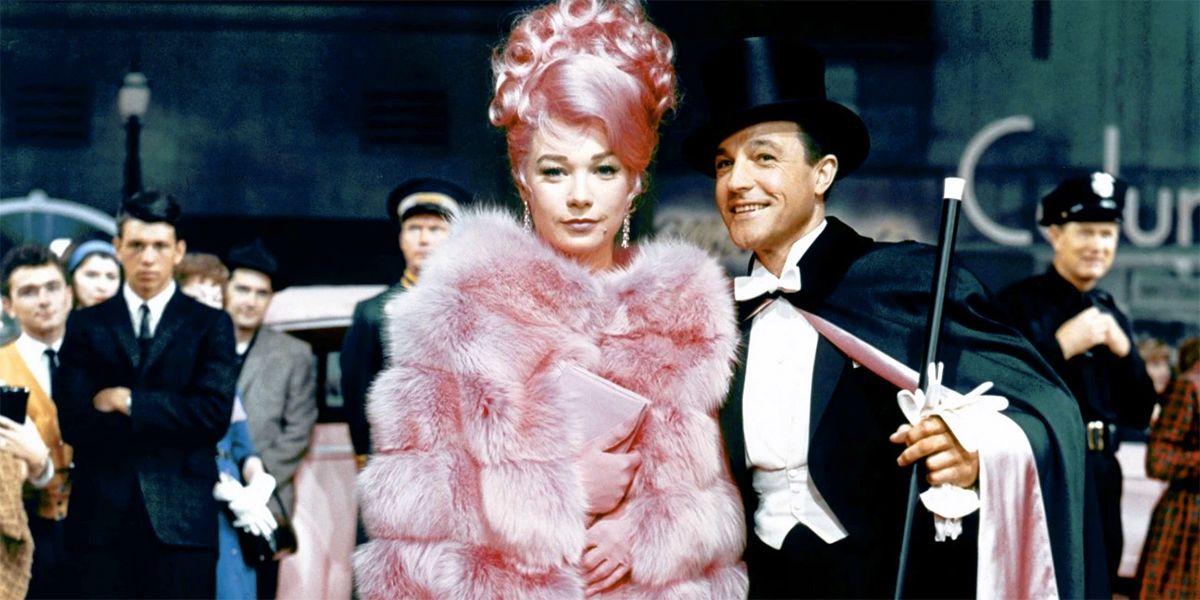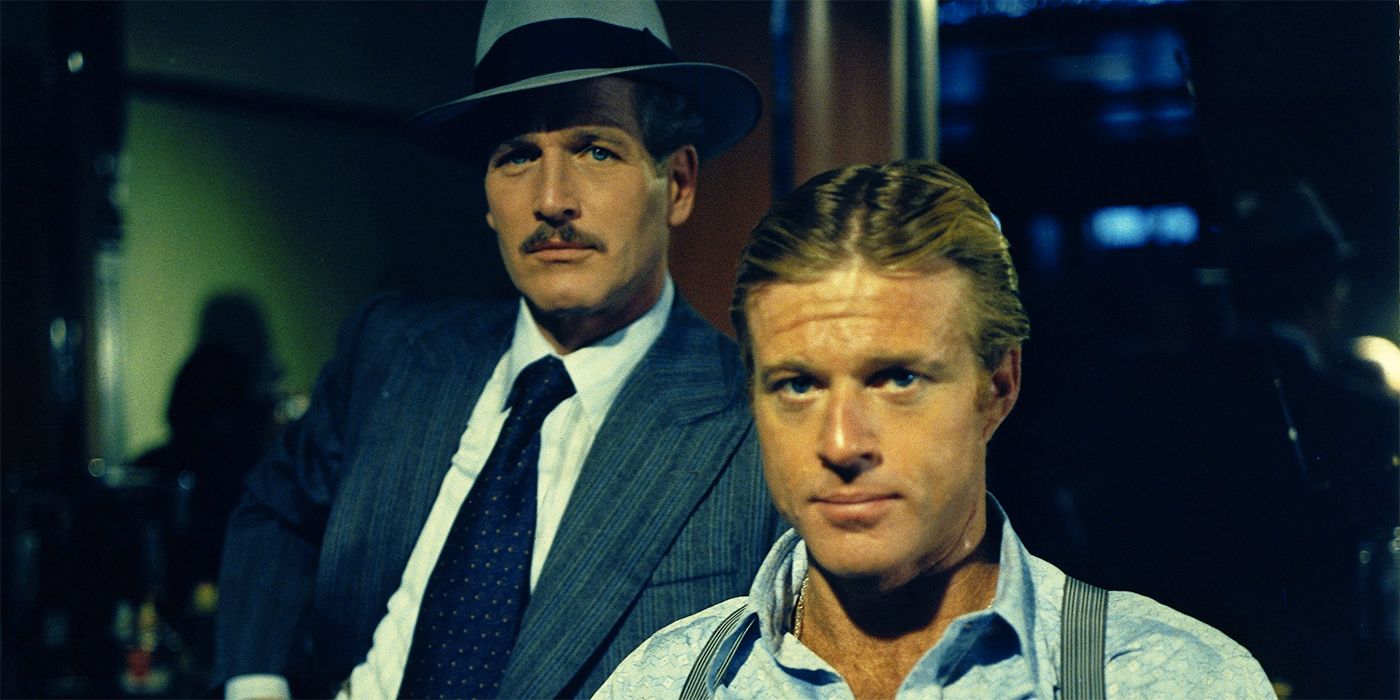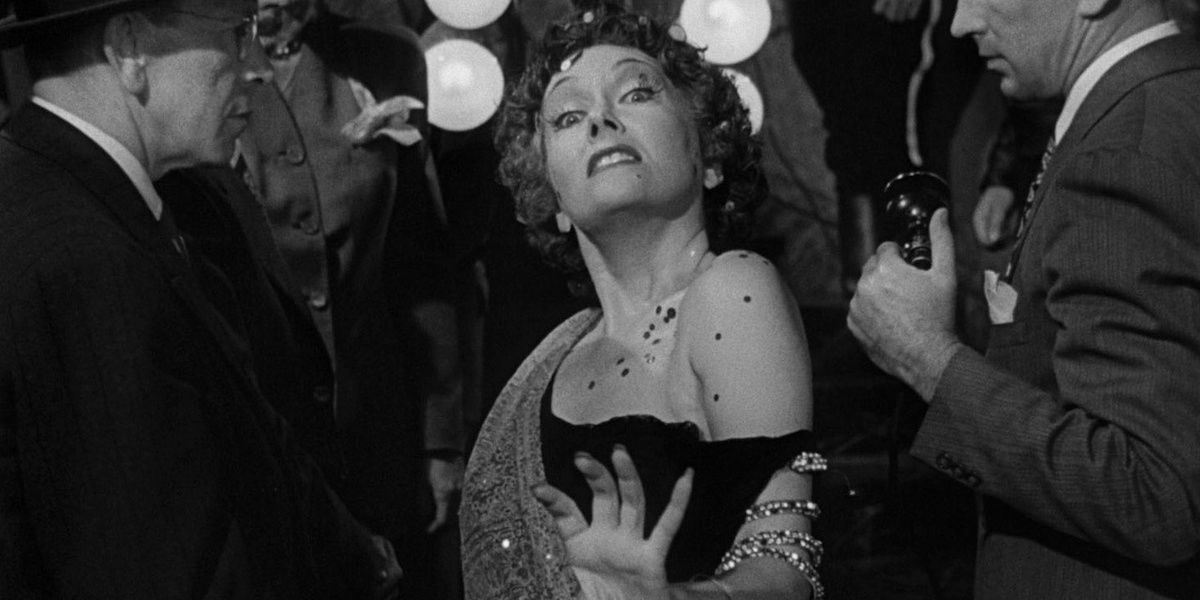Costume is an essential aspect of cinematic storytelling. Not only does it help world-build and provide non-verbal insights into character and context, but when done exceptionally, costuming leaves an indelible mark on culture as we know it: think Marilyn’s white dress, Darth Vader’s onyx suit, Uma’s black-and-yellow one-piece. And no one understood this significance quite like Edith Head.
Whether it was set in the Old West, the cobblestone streets of Rome, or WWII Brazil, Head told story after story through the art of costume design during her 50-year career. Such vast range and inspired talent made her the most awarded woman in the history of the Academy Awards (she clocked in at 8), and several of the films she costumed are considered all-time greats. From Sidney Poitier to Natalie Wood, Head helped construct the biggest screen stars of Hollywood’s Golden Age and influenced American style from the top down, leaving an unparalleled legacy of excellence that the field of costuming has yet to witness since.
Though she contributed to dozens of magnificent films, below we’ve rounded up the 11 best films that strike a balance between the watchability of the film and the extent to which it showcases Head’s talents. Warning, some rankings contain spoilers for some old movies!
11. She Done Him Wrong (1933)
“Listen, when women go wrong, men go right after them.” This quip, one of many in She Done Him Wrong, goes hand-in-hand with Head’s vision for its costumes. Mae West stars in this pre-Hays-code film as Lady Lou, a saloon beauty in the gay 1890s with an affinity for diamonds and a million cheeky one-liners. Navigating a crooked boss, ruthless ex-boyfriend, and a seemingly unending parade of suitors, Lou eventually finds her way into the loving arms of an FBI agent (Cary Grant) who determines a girl as beautiful as she doesn’t belong in jail.
Head vamps up the 1890s by weaving a (then-modern) 1930s sense of sexuality with threads of historical accuracy. The result is an unbelievable variety of gaudy plunging gowns, gigantic hats, intricate beading, and delicate négligée, all cut to perfection on the supremely voluptuous West. Come for the witty quips, stay for the costumes.
10. White Christmas (1954)
For all the significant reasons this film has achieved classic status (chiefly Bing Crosby’s timeless croons), one of the most underrated is the splendid costuming. The Christmas classic is a cheery tale of two musically-inclined brothers who team up with a singing sister act to help a friend and former WWII military commander escape financial ruin.
White Christmas is a true of-the-era family flick, so the costumes needed to strike the most wholesome and puritanical of notes. New look-style femininity, accompanied by long hemlines, high necks, cozy fabrications, and demure prints all set the stage for the main attraction. The matching blue dresses and dazzling plumed fans worn by Rosemary Clooney and Vera-Ellen steal the show in a film filled with heartwarming holiday garb.
9. Butch Cassidy and The Sundance Kid (1969)
Another Best Picture winner and one of the all-time greats, Butch Cassidy and The Sundance Kid owes its costumes to Head. Butch (Paul Newman) and Sundance (Robert Redford) go on the run with a schoolteacher to Bolivia after a train robbery gone wrong, and fight to the bitter end to evade the law. Based on the real-life story of the titular outlaws, the film tackles friendship, death, and romance in the Wild West.
The iconic looks Head crafted for this film are subtler than some other entries on this list, focusing on craft and realism rather than any one particular “wow” moment. She shifts effortlessly from gentlemanly getups and cotton prairie dresses to tan leather vests and beat-up suit jackets. While the film is a must-see, the successful aspect of the costumes is precisely the opposite: you hardly even notice they’re there.
8. Notorious (1946)
Ingrid Bergman and Cary Grant star in this celebrated Alfred Hitchcock film noir, one of many collaborations between Hitchcock and Head. When the story begins, Alicia Huberman (Bergman) is a reputational floozy whose father is being jailed for being a Nazi conspirator. U.S. government agent T.R. Delvin (Grant) loops her into an operation in Rio where she must seduce a man she detests, one of her father’s colleagues, to take down the rogue Nazis. Huberman and Delvin fall in love, but each struggles to reconcile the hypocrisies of the other.
When we first see Alicia, she wears a zebra-striped crop top – somewhat saucy by 1940s standards – and when she first meets Delvin, he ties a scarf around her bare stomach. This use of costume as a way to illustrate a fundamental conflict between the two characters (romantic loyalty vs patriotic duty) is something Head continues throughout the film. Bergman’s wardrobe takes a turn for the conservative further on in the film, consisting of angelic all-white ensembles and lady-like structured jackets. The only deviation from this comes when she is performing her most dangerous act of espionage, one in which she kisses Grant while still a married woman. For this scene, she wears a ravishing full-length gown, scoop-necked with a dip back and a rhinestone belt. The film itself is tense and calculated, considered one of Hitchcock’s finest. That the costumes matched the film’s dark, precise stride is the ultimate testament to Head’s abilities.
7. All About Eve (1950)
All About Eve is one of the most masterfully written and acted films of all time, chronicling the cat-and-mouse game between a veteran Broadway actress, Margo Channing (Bette Davis), and her biggest fan, Eve (Anne Baxter). When Eve’s presence becomes more malignant than benign, the hostilities and deception come out from the shadows and into the light.
Head’s challenge with this film was illustrating the subtle appropriation of Margo’s persona by the seemingly adoring Eve. When we first see Eve (chronologically), she looks to be of humble origins, in a plain wrinkled raincoat and hat. Plaid skirts and modest sweaters follow, until a party scene where Eve’s black party dress looks strikingly similar to the one Margo herself wears. This transformation slowly inches on, and it isn’t until the end of the film, when Eve is accepting a prestigious acting award, that she is fully transformed into a sequin-and-satin-wearing star like Margo. The genius of the costumes lies in its final, full-circle moment: the now-glamorous Eve is greeted by her own biggest fan, dressed very humbly in a button-up and skirt.
6. A Place in the Sun (1951)
Rich with heavy thematic material, A Place in the Sun is a film that required Head’s acute attention to detail.
Factory worker George Eastman (Montgomery Clift) tries to climb the corporate ladder and seize his American dream, but when a half-accidental/half-intentional drowning takes place, his dreams are dashed, and he is sentenced to the electric chair. The film catapulted Elizabeth Taylor into the spotlight for her role as Angela Vickers, George’s romantic interest and the female personification of all that Eastman comes so close to having. Conversely, Shelley Winters plays Alice Tripp, a plain working-class girl who becomes pregnant with George’s child.
In distinguishing between these women’s social statuses, Head employs the full extent of her skill. Alice wears gingham button-ups and plain scarves while Vickers appears clad in one of the most iconic gowns in film history, a white chiffon dress with exquisite lace detailing on the 22-inch-waisted beauty. The goal was achieved: Taylor was the picture of unattainable, if not mythical, perfection.
5. To Catch a Thief (1955)
Alfred Hitchcock trusted Edith Head to translate his vision into clothing, as is evidenced by their frequent collaborations. One such collaboration, To Catch a Thief, was unique among his films because of its charming and light tone, lacking in the usual terror and suspense he employed. As a result of this unusually carefree tone, the costumes Head created are among her most enjoyable to devour.
While playing games with jewels and hearts on the French Riviera, the dashing Cary Grant and the ephemeral Grace Kelly are dressed in a way that 1950s workless luxury demanded: elegant periwinkle gowns, driving gloves, pastel scarves, and the crème de la crème, an oversized golden gown and matching masquerade mask that made Kelly look like a wedding cake topper. The clothes are as playful as the film is, without ever delving into frivolity. Except, of course, for the glorious golden gown, which is frivolity at its finest.
4. Roman Holiday (1953)
Not all makeover sequences are created equal. We have Head to thank for that. When Princess Anne (Audrey Hepburn) gets tired of the dull life of a royal, she runs away for a day of pure fun in the Eternal City with hunky reporter Joe Bradley (Gregory Peck). Rarely has an outfit been more imitated than Princess Anne’s undercover citizen look (kind of a reverse makeover, from regally-dressed princess to gamine-about-town), consisting of a robin’s-egg-blue circle skirt, white button-up blouse, dainty scarf, and Roman leather sandals.
The genius behind this look undoubtedly owes itself to Head’s imagination, however, there are some discrepancies as to the creation and production of Roman Holiday’s costumes as a whole. Had there been color, this surely would rank higher on the list as one of the greatest films for which Head ever created costumes. Head is also listed as the costume designer for several of Hepburn’s subsequent films, however further controversy as to the credit for creation leaves fabulous films like Funny Face and Sabrina off the list.
3. What a Way to Go! (1964)
This film is not the mountaintop of cinematic excellence. But it is perhaps the greatest showcase for Edith Head’s enormous talent and wildly intoxicating imagination, earning it a high spot on this list.
What a Way to Go! chronicles the many husbands of Louisa May Foster (Shirley McClaine), all of whom die and leave her richer and richer with each accidental death. Louisa, as a result of the extraordinary wealth and eccentric tastes of her husbands, and with Head’s $500,000 costume budget, gets to wear more than 70 different costumes. There’s a sculptural wrap-around bikini, a head-to-toe pink evening ensemble (with matching pink hair, of course), feathers in clementine and baby blue, and beaded backless gowns, all in the most dazzling array of colors and fabrications imaginable. If ever there were a showcase for the once-in-a-lifetime imagination that was Head, it’s What a Way To Go!
2. The Sting (1973)
Perhaps not the most visually exciting entry on this list, The Sting certainly is one of the most masterful executions of costume. Unlike What a Way to Go!, the costumes aren’t supposed to be a focal point, rather, they work as a flawlessly executed storytelling strategy, symbiotic with the script and direction.
In the film, small-time grifter Johnny Hooker (Robert Redford) teams up with veteran hustler Henry Gondorff (Paul Newman) to exact revenge on a murderous crime boss. They do this by running a “big con,” which luckily for Head, just so happens to involve costumes. If you’re a fan of tailoring and a 30s-meets-70s color palette, this is the film for you. The cunning duo sport both elegant tuxedos and gaudy brown pin-striped suits, while their brothel companions ride carousels in satins and marabou feathers. It’s proof that Head’s restraint is as commendable as her innovation. The fact that The Sting is also a Best Picture Winner is further incentive to add it to the queue.
1. Sunset Boulevard (1950)
Although Head didn’t even get an Oscar nomination for her costume work on Sunset Boulevard, it is undoubtedly the greatest intersection of her costume prowess and overall film quality. Sunset Boulevard tells the story of the struggling screenplay writer Joe Gillis (William Holden). Gillis gets tangled up in the psychosis of a once-great actress, Norma Desmond (Gloria Swanson), whose delusions of grandeur result in a series of mounting tragedies.
Not only does Sunset Boulevard boast an expertly woven narrative and impeccable performances, but it also happens to be the finest example of Head’s ability to communicate character through clothing. Norma has convinced herself that her star has not faded, and as such, her clothes are modern and expensive-looking. However, each look, from her wild leopard print ensemble to the skirt suits and feathered hats she wears on a regular basis, contains a twinge of madness. They’re like refracted nightmares: unintentionally nostalgic and indescribably strange. It’s this dreamy quality Head infuses into Norma’s wardrobe, and the rags-to-riches-to-rags flow of Gillis’, that makes it clear Head had an inherent understanding of the film’s messaging and character arcs. As a result, she created costumes so magnificent they become one with the story.

